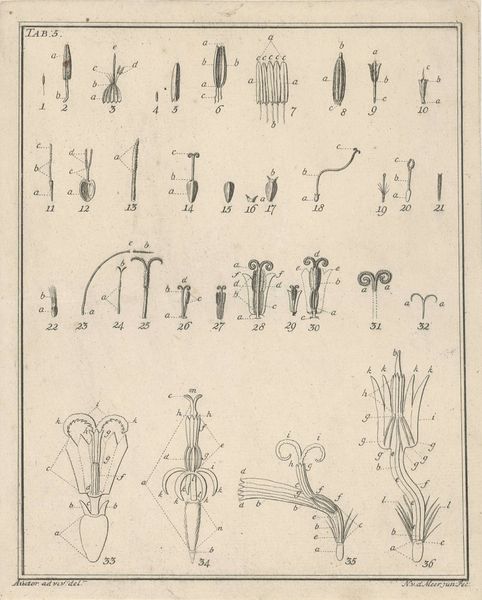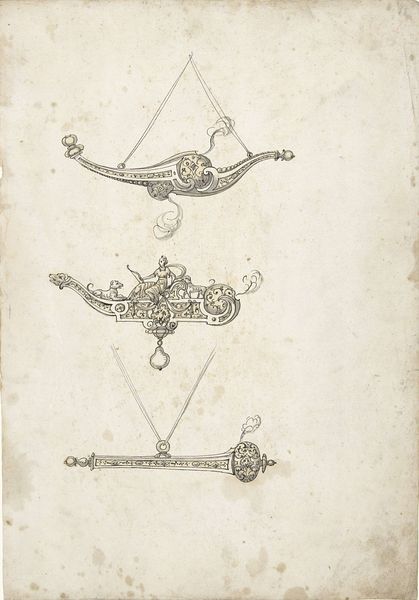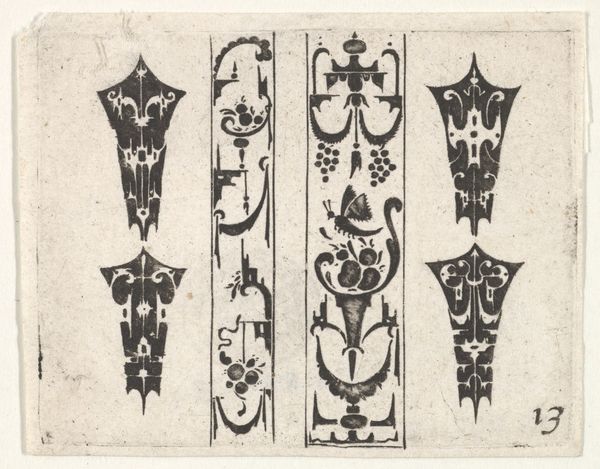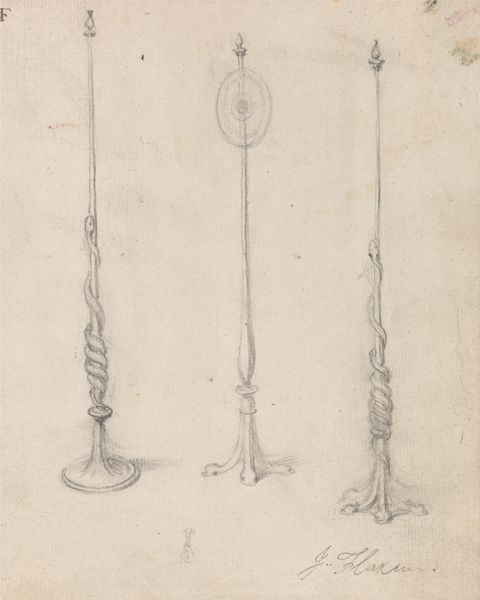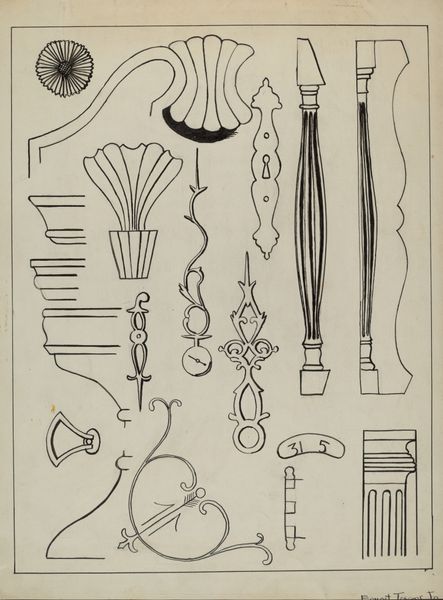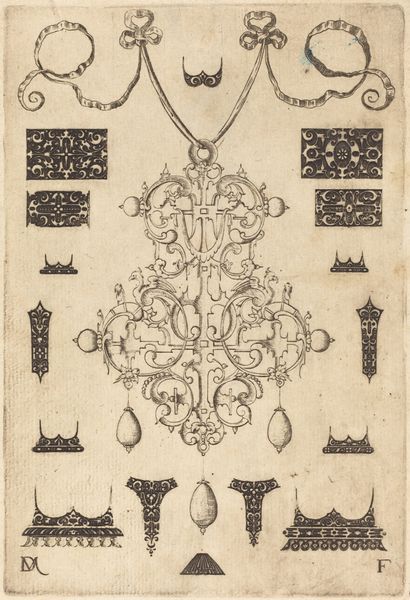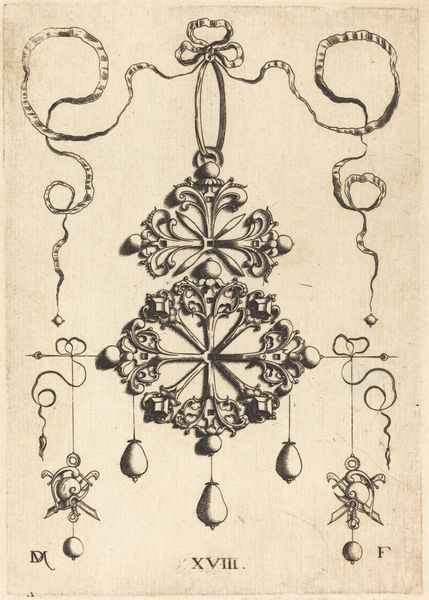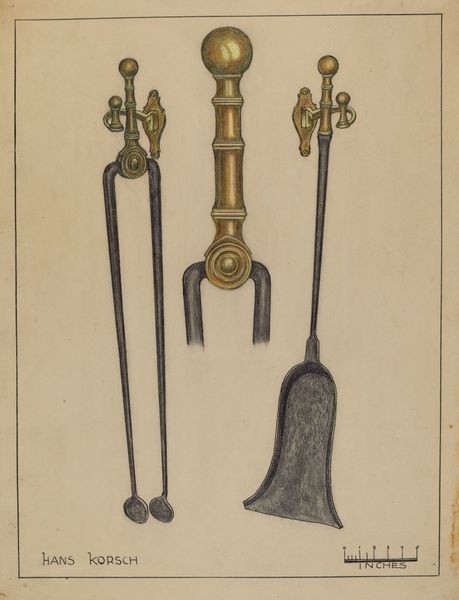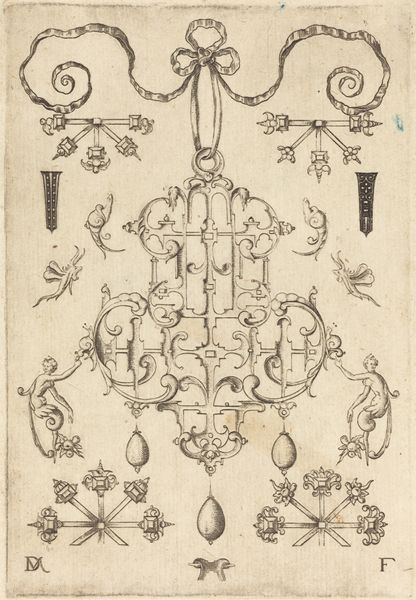
drawing, ink, pen
#
drawing
#
weapon
#
medieval
#
figuration
#
ink
#
geometric
#
pen
Dimensions: height 173 mm, width 133 mm
Copyright: Rijks Museum: Open Domain
Curator: This ink and pen drawing, entitled "Twintig pieken in drie rijen boven elkaar" or "Twenty Spikes in Three Rows Above Each Other," dates to somewhere between 1500 and 1568 and is from an anonymous hand. Visually, it’s a compilation, a neat arrangement of weapon sketches. What's your immediate take on this? Editor: Stark. Almost brutally simple. The density of the dark ink on this aged paper evokes a feeling of somber inventory. It feels less like art, and more like…preparation. Curator: Preparation is a key part of its context, actually. Drawings like this often functioned as templates, influencing the widespread creation and use of similar weapons across social classes. It reveals how weaponry was visualized and standardized, influencing cultural perceptions of power and defense during a turbulent period. Editor: That certainly connects with the array of weapons depicted. Look at the repetition of form! Each weapon seems both distinct and yet part of a unified set. What I find especially intriguing is how even the more ornamental-looking weapons still communicate functionality—they weren’t *just* symbols, they were tools. Curator: Indeed, weaponry in art is rarely just about function. Think about what the spear symbolizes, for example: historically, it signifies aggression, conquest, and male prowess. These objects carry profound cultural memories relating to protection and dominance. Notice, for instance, how the rising sun image surmounts one of the polearms. Editor: A sunburst as a weapon adornment…now that’s potent imagery. It marries divine right with martial capability. Did this choice, this specific weapon then denote more about the person who wielded it—their societal standing? Curator: Possibly, yes. The choice in weaponry in art during the Medieval and Renaissance era reflects specific individual social class. What details of dress were in portraits. What weapons were chosen also could project cultural affiliations and psychological stances of an individual, their hopes, their fears…even their self-image. Editor: It's a complex statement, then. More than mere militaristic cataloguing, the artist offers these weapons as resonant icons from a period of cultural unease. Curator: Exactly. The convergence of history, psychology and symbol. Editor: Reflecting on it, this drawing seems to embody more than just the physicality of weapons; it captures the psychology and the socio-political implications of wielding them.
Comments
No comments
Be the first to comment and join the conversation on the ultimate creative platform.

